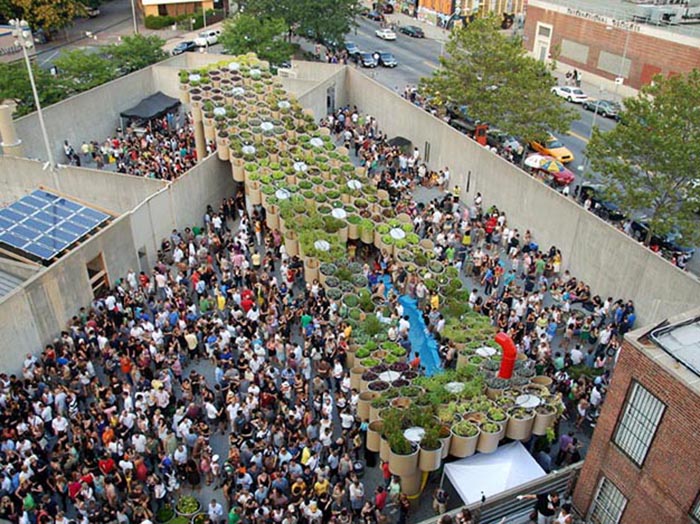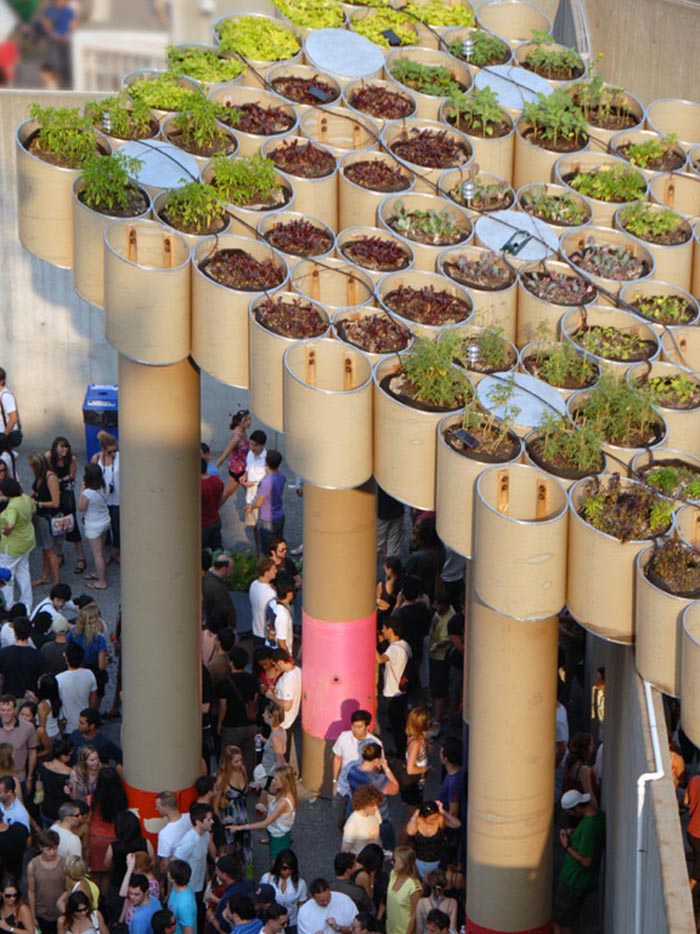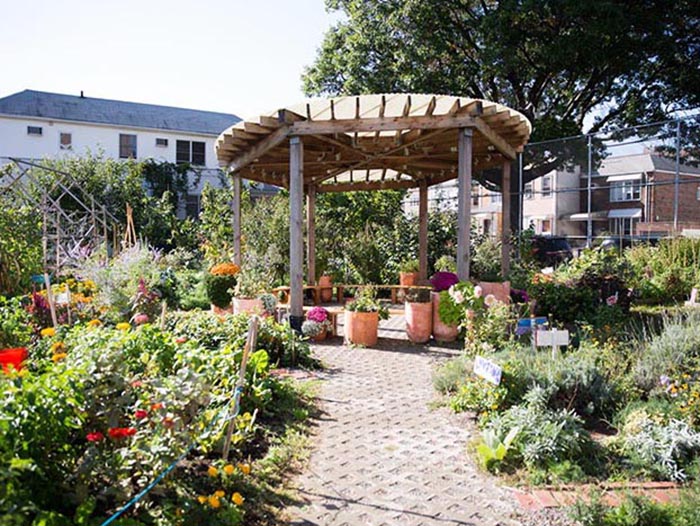She co-founded and co-leads a 35-person architecture practice in New York; has taught at numerous universities, and was the first female dean at the University of Columbia’s Graduate School of Architecture, Planning, and Preservation.
No stranger to the spotlight, Lebanese-born architect Amale Andraos has set new precedents for women in architecture—and sustainability. The WORK Architecture Company (WORKac) principal is committed to climate change, and together with her partner and husband Dan Wood, focuses on achieving a “more careful integration between architecture, landscape and ecological systems.”
Here are three notable green projects by the studio.
Public Farm

Commissioned by the Museum of Modern Art (MoMA) PS1 in Queens, New York, for its Young Architects Program, Public Farm 1—or P.F.1—is a completely off-grid, biodegradable and recyclable half-acre urban farm that also serves as an outdoor social space for education, play, and community building.

The farm is made from elevated cardboard tubes, formed into a folded plane and designed to hold planters for 50 different types of organic fruit, vegetables and herbs. Some of the tubes extend to the ground as columns, offering shade and seating, and even a place to charge mobile phones or host a juice bar.
“P.F.1 is about celebrating the marriage of sustainable infrastructure, innovative building materials, visionary urbanism and dancing—and declaring that architecture can bring together cities, farms, food and everyday life,” WORKac says.

Photography by Mikkel Bøgh, via publicfarm1
Edible Schoolyard NYC at P.S 216

The Edible Schoolyard Project, launched by activist Alice Waters in 1995, seeks to integrate organic gardening and cooking into the public school curriculum—what is today known as edible education. In 2010, Andraos and WORKac transformed a half-acre parking lot at P.S 216 Arturo Toscanini School in Brooklyn into a vibrant garden classroom. Here, students learn to grow and harvest approximately 160 different types of fruits, grains, herbs and vegetables.
According to the design team, the building comprises three interconnected programs: a blue rubber “systems wall” that reveals the sustainable infrastructure; the “decorated shed” of the kitchen classroom; and a greenhouse that allows classes to continue regardless of the weather.
New Holland Island Master Plan

New Holland Island is an eight-hectare island in the heart of St. Petersburg—formerly home to a naval prison, lumberyard, military barracks and radio station. Bordered by two canals and a river, the island has been off-limits to the public for 300 years.
WORKac’s competition-winning master plan preserves the site’s 18th century warehouses and heritage, while transforming its core into a public park with new commercial, cultural and residential programs.
“Weaving through the high brick arches of the existing structures, a raised interior promenade introduces pedestrian life and modern infrastructure into the historic warehouses,” WORKac says.
“Voids carved into the buildings; upper levels make an architecture out of subtraction, bringing the park and sunlight into the buildings as winter gardens.”
Lead image: Jonathan Lattif for Columbia Magazine

